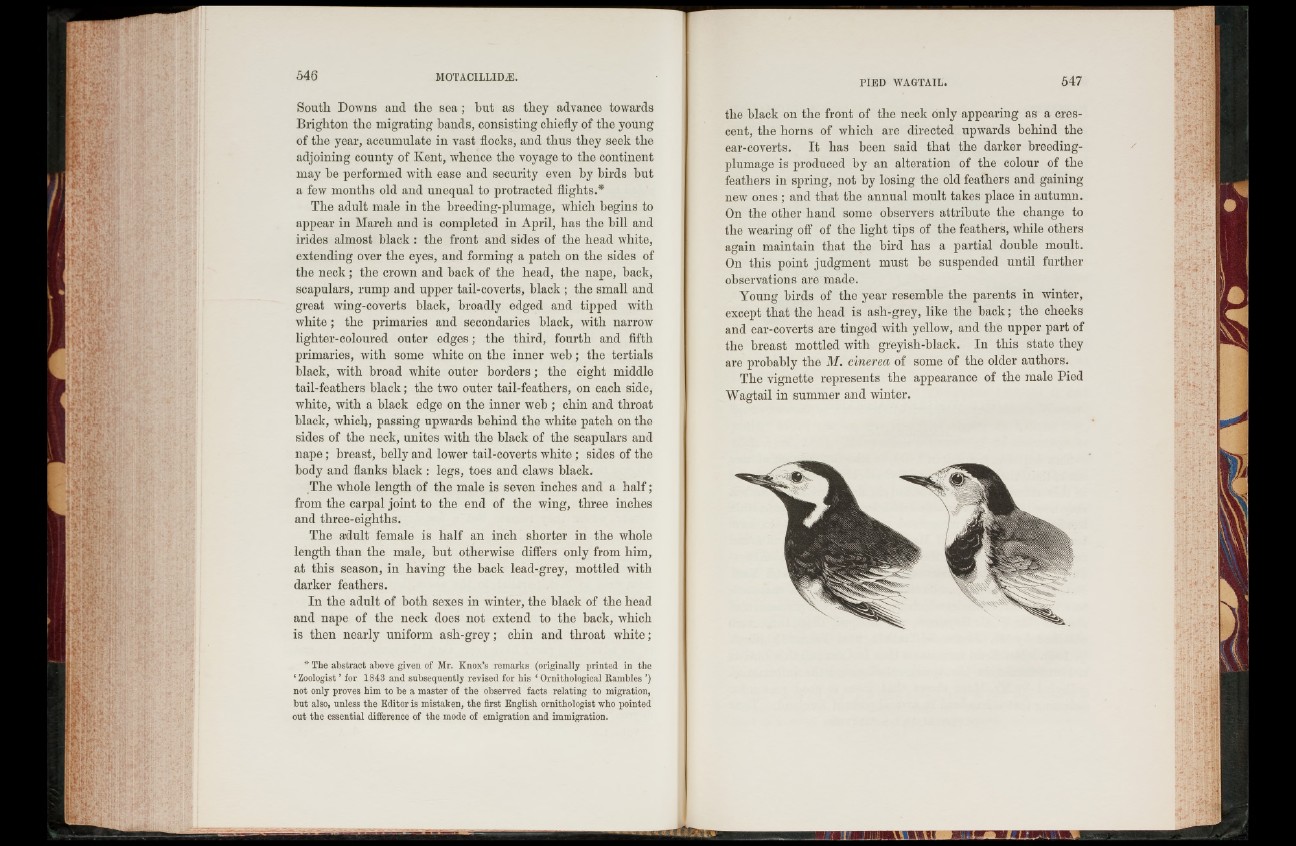
South Downs and the s e a ; but as they advance towards
Brighton the migrating hands, consisting chiefly of the young
of the year, accumulate in vast flocks, and thus they seek the
adjoining county of Kent, whence the voyage to the continent
may he performed with ease and security even by birds but
a few months old and unequal to protracted flights.*
The adult male in the breeding-plumage, which begins to
appear in March and is completed in April, has the bill and
irides almost black : the front and sides of the head white,
extending over the eyes, and forming a patch on the sides of
the neck; the crown and back of the head, the nape, back,
scapulars, rump and upper tail-coverts, black ; the small and
great wing-coverts black, broadly edged and tipped with
white; the primaries and secondaries black, with narrow
lighter-coloured outer edges; the third, fourth and fifth
primaries, with some white on the inner web; the tertials
black, with broad white outer borders; the eight middle
tail-feathers black; the two outer tail-feathers, on each side,
white, with a black edge on the inner web; chin and throat
black, wliiclj, passing upwards behind the white patch on the
sides of the neck, unites with the black of the scapulars and
n ap e; breast, belly and lower tail-coverts white; sides of the
body and flanks black : legs, toes and claws black.
The whole length of the male is seven inches and a h a lf;
from the carpal joint to the end of the wing, three inches
and tliree-eightlis.
The adult female is half an inch shorter in the whole
length than the male, but otherwise differs only from him,
at this season, in having the back lead-grey, mottled with
darker feathers.
In the adult of both sexes in winter, the black of the head
and nape of the neck does not extend to the back, which
is then nearly uniform ash-grey; chin and throat white;
* The abstract above given of Mr. Knox’s remarks (originally printed in the
‘ Zoologist ’ for 1843 and subsequently revised for his ‘ Ornithological Rambles ’)
not only proves him to be a master of the observed facts relating to migration,
but also, unless the Editor is mistaken, the first English ornithologist who pointed
out the essential difference of the mode of emigration and immigration.
the black on the front of the neck only appearing as a crescent,
the horns of which are directed upwards behind the
ear-coverts. I t has been said that the darker breeding-
plumage is produced by an alteration of the colour of the
feathers in spring, not by losing the old feathers and gaining
new ones ; and that the annual moult takes place in autumn.
On the other hand some observers attribute the change to
the wearing off of the light tips of the feathers, while others
again maintain that the bird has a partial double moult.
On this point judgment must he suspended until further
observations are made.
Young birds of the year resemble the parents in winter,
except that the head is ash-grey, like the hack; the cheeks
and ear-coverts are tinged with yellow, and the upper part of
the breast mottled with greyish-black. In this state they
are probably the M. cinerea of some of the older authors.
The vignette represents the appearance of the male Pied
Wagtail in summer and winter.